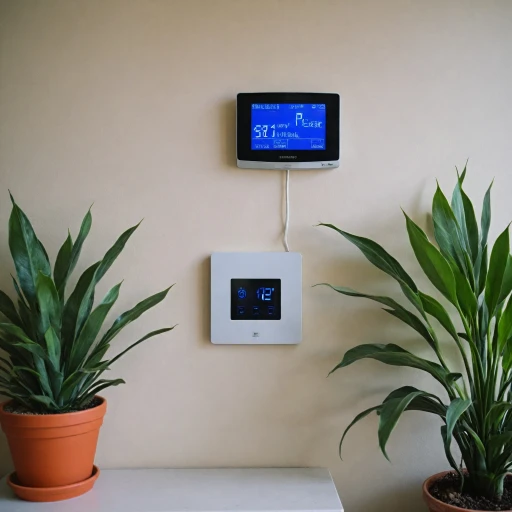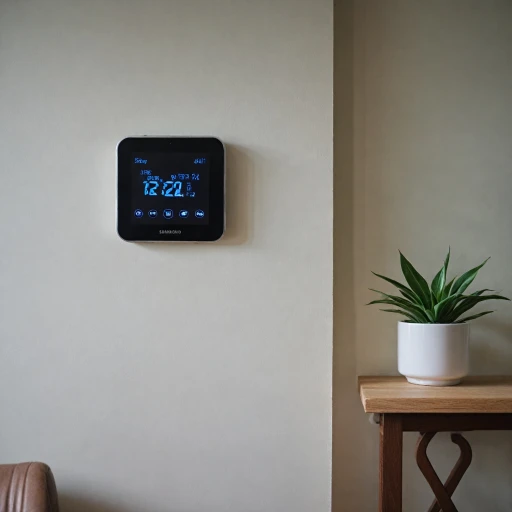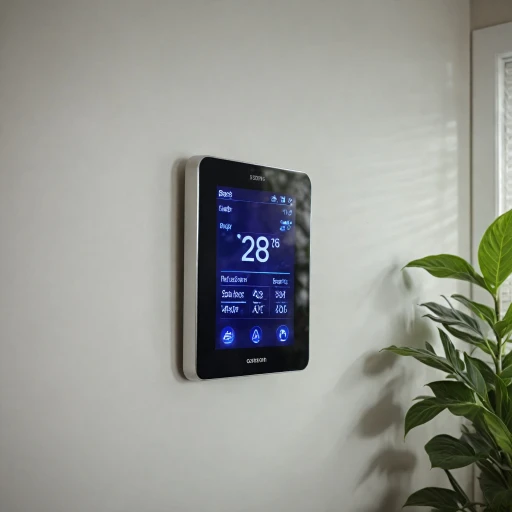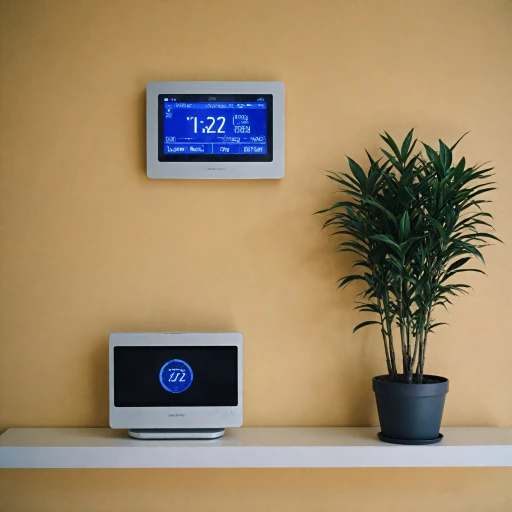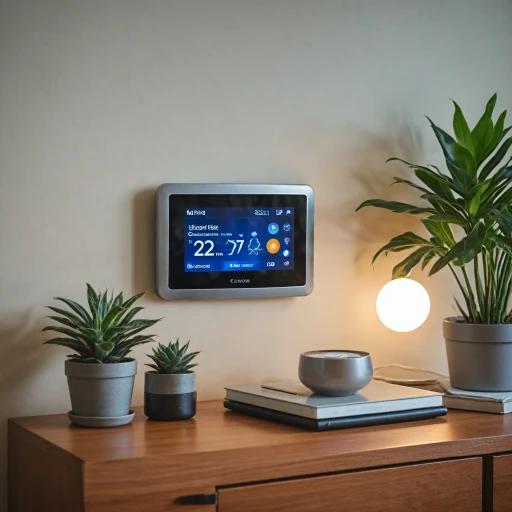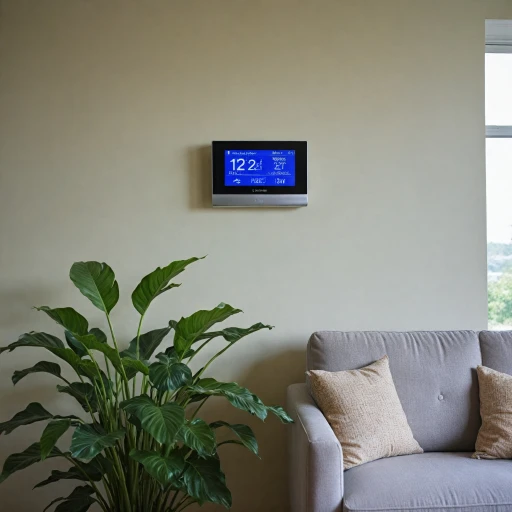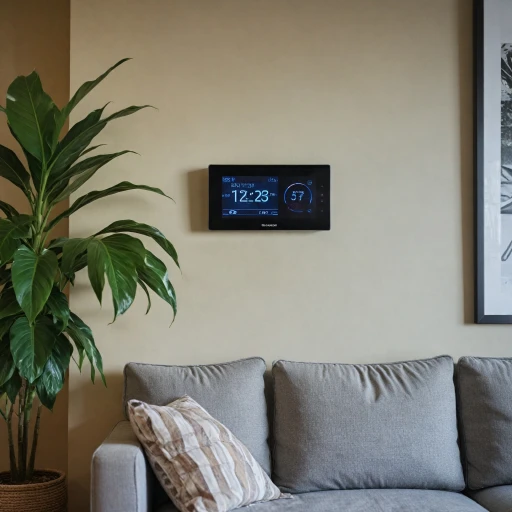
Understanding Wireless Internet Thermostats
Introduction to Smart Thermostats
Smart thermostats are a modern convenience that offers more than just the ability to adjust your home's temperature. They come with features that cater to energy efficiency and provide seamless integration with existing smart home systems. Moreover, they ensure you have better control over heating and cooling systems through your smartphone, voice control via Amazon Alexa or Google Nest, and even programmable settings.
How Wireless Internet Thermostats Work
Installing a wireless internet thermostat is an easy step to upgrade your home's temperature control system. Models like the ecobee smart thermostat or nest learning thermostat are popular for their advanced sensor technologies. These devices rely on Wi-Fi connectivity for operation, eliminating the need for complex wiring setups. Once connected, they can communicate with other compatible systems, providing comprehensive system control.
Smart thermostats like those from ecobee or google nest come loaded with high-end features such as room-specific sensors that help maintain optimal air quality and consistent temperatures throughout the day. These sensors detect occupancy, allowing the system to adjust temperatures accordingly, adding to both comfort and energy savings.
Advanced Technology and Features
Many smart thermostats, such as the Emerson Sensi Wi-Fi thermostat, incorporate advanced features that offer robust automation and control options. These devices are engineered to learn from your habits, helping automate heating and cooling patterns without daily input. Some even come with an "auto" function that optimally manages heating cooling based on past data.
With energy star ratings, these devices promise not just advanced tech, but also energy savings, which translates to reduced utility bills over time. The adaptability of such systems, whether relying on voice commands or a programmable interface, truly sets them apart in the growing market of smart home devices.
Key Features to Look for in a Wireless Internet Thermostat
Essential Characteristics for an Ideal Smart Thermostat
When exploring options for a wireless internet thermostat, it's crucial to focus on some key features that can significantly enhance your experience. As these devices become staples in achieving smart homes, understanding their functionalities can steer you towards the most fitting choice.- Compatibility and Integration: Ensure that the thermostat is compatible with your heating and cooling systems as well as other devices. This includes being able to sync seamlessly with popular platforms like Amazon Alexa, Google Nest, and Ecobee smart systems. Pay attention to its ability to work with your existing home setup, particularly if your system lacks a common wire, which can complicate installations. For more information on options without this requisite, consider exploring WiFi thermostats that don’t need a common wire.
- User Friendly Interface: The ease of use in the control interface of smart thermostats can make a significant difference. Look for features like a responsive touchscreen, intuitive apps, and clear readouts that allow for effortless management of your home's temperature settings.
- Sensor Technology: Advanced thermostats come equipped with sensors that optimize comfort by detecting changes in temperature and air quality. These sensors not only enhance the heating and cooling efficiency but also potentially contribute to energy savings by making precise adjustments.
- Energy Management Tools: Smart thermostats often provide detailed insights into your energy consumption, allowing you to adjust your usage patterns to reduce costs. Some models, like those with Energy Star certification, offer built-in programmable features that further enhance efficiency during various times of the day.
- Remote Accessibility: With wireless thermostats, remote control is a significant feature, enabling you to manage your home’s temperature from anywhere. This is particularly beneficial for altering settings when you're away, ensuring comfort and energy efficiency upon return.
Energy Efficiency and Cost Savings
Maximizing Savings and Efficiency with Wireless Thermostats
Incorporating smart thermostats into your home not only brings convenience but can efficiently contribute to energy savings as well. Wireless internet thermostats, like ecobee and Nest Learning, are designed to optimize your heating and cooling systems, ensuring that you maintain a comfortable environment while cutting down on costs. Here's how these smart devices help you save energy and money:
- Programmable Scheduling: Many smart thermostats, including options like the ecobee smart thermostat and Google Nest, allow for programmable schedules. Users can set daily temperature adjustments that align with their routines, ensuring efficient energy use only when needed.
- Adaptive Learning: Devices like the Nest Learning Thermostat learn from your habits and adjust your heating and cooling preferences autonomously, providing a tailored experience that saves energy without compromising comfort.
- Remote Control: These thermostats integrate with platforms like Amazon Alexa and Google Assistant, offering users the power to control temperature remotely via mobile apps. This feature is especially beneficial for those who frequently travel or spend extended hours away from home.
- Energy Reporting: Many premium models include detailed energy consumption reports, empowering users with insights into their energy use patterns and facilitating informed decisions on further improvements.
- Compatibility with Energy Programs: Certain smart thermostats might qualify for energy efficiency programs or rebates, further enhancing their cost-effectiveness and encouraging adoption of environmentally friendly practices.
With the integration of advanced sensors and the ability to work with various systems, wireless thermostats represent a convergence of technology and eco-conscious living. By allowing precise control over temperature regulation, these devices ensure that your home maintains an ideal climate, all while reducing energy waste and lowering utility bills. Prioritizing energy efficiency not only contributes to financial savings but also plays a part in a more sustainable future.
Integration with Smart Home Systems
Enhancing Your Home with Smart Integration
In today's rapidly advancing tech world, integrating your wireless internet thermostat with smart home systems can significantly enhance your home's convenience and efficiency. When selecting a smart thermostat, compatibility with popular smart home platforms such as Amazon Alexa and Google Nest is essential. These systems allow you to control your thermostat with simple voice commands, providing an effortless way to manage your home's heating and cooling. Incorporating a learning thermostat, such as the Nest Learning Thermostat, into your smart home ecosystem can further optimize your energy usage. These devices adapt to your habits over time, creating a personalized temperature control schedule that maximizes energy savings. Consider the Ecobee Smart Thermostat, known for its superior room sensor technology, which offers unparalleled comfort by maintaining a consistent temperature throughout the day. Besides voice control, wireless thermostats offer system control through dedicated apps, enabling you to adjust the temperature from anywhere. This is particularly useful for busy individuals who may need to change settings while away from home. For those interested in automatic temperature management, programmable thermostat features allow for scheduling adjustments based on your routine. Additionally, some of the premium smart thermostats come with air quality monitoring and energy star certification, adding an extra layer of efficiency to your smart home system. By utilizing these smart features, homeowners can achieve not only comfort and convenience but also notable cost savings and efficiency in their energy use, as discussed in previous sections. Consider choosing a smart thermostat that is both compatible with your existing home systems and meets your specific needs in terms of energy control, convenience, and smart integration features. With the right setup, your thermostat can seamlessly become an integral part of your smart home environment, providing both comfort and efficiency.Security and Privacy Considerations
Addressing Security Concerns in Smart Thermostat Systems
As with any technology that involves connectivity and personal data, smart thermostats like the ecobee smart or learning thermostat come with their own set of security and privacy considerations. Ensuring that your thermostat system remains secure is crucial for protecting your information and maintaining the reliable operation of your heating and cooling system.
One major aspect to be aware of is securing your wireless network. Since smart thermostats operate over Wi-Fi and often integrate with platforms like alexa google or amazon alexa, they can be vulnerable to unauthorized access if your home’s network is not secured. It's advisable to use strong, unique passwords and enable network encryption.
Additionally, consider the data your smart thermostats collect. Many models, including those by google nest and ecobee, gather information about your energy usage, routines, and temperature control preferences. Ensure to review the privacy policy of your device to know how your data is being handled and whether there are options to limit data sharing.
When selecting a smart thermostat, opt for models that include firmware and software updates. This feature keeps the device up-to-date with the latest security patches, minimizing the risk of vulnerabilities. It's also worthwhile to explore thermostats that offer additional security features, such as sensor tampering alerts or locking mechanisms.
Regarding compatibility, ensure your thermostat's system is compatible with your existing smart home systems to avoid complications. Thermostats like CLS fill and carrierCMS lfill are designed to seamlessly integrate with popular platforms, enhancing their security through a cohesive system control approach.
Regularly monitoring the activity of your thermostat and maintaining awareness of new security developments can help you swiftly address potential issues. By taking these steps, you can enjoy the innovative features of your wireless thermostat without compromising on security.
Troubleshooting Common Issues
Troubleshooting Common Challenges with Smart Thermostats
As with any piece of technology, smart thermostats may sometimes encounter issues. Here's a closer look at some common challenges and how to address them.- Connection Problems: Many wireless thermostats like the ecobee and Nest Learning rely on a strong internet connection. If you notice your thermostat losing connectivity, check your Wi-Fi signal strength. Placing your router closer to the thermostat or using a Wi-Fi extender can help.
- Temperature Discrepancies: If the temperature displayed on your thermostat doesn't match the actual room temperature, sensors may need recalibrating. Ensure your thermostat and any additional sensors are placed away from heat sources or direct sunlight, which could skew readings.
- Compatibility Issues: Before purchasing a smart thermostat, ensure it is compatible with your heating and cooling system. Many models, such as the Google Nest, are designed to work with a range of systems, but it's always best to double-check.
- Voice Command Troubles: Integrating with virtual assistants like Amazon Alexa or Google Assistant is a popular feature. If your thermostat isn’t responding to voice commands, ensure that it is properly synced and that the respective skills or apps are enabled.
- Unresponsive or Slow Performance: Regular software updates are critical for optimal performance. Check whether your thermostat's firmware is up-to-date. Following the manufacturer’s recommended steps to restart can occasionally resolve performance hiccups.

